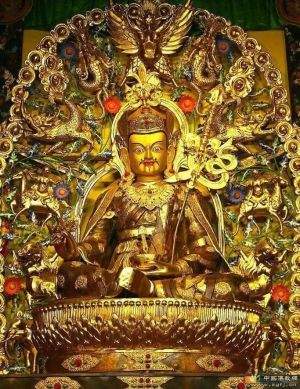Subject: Daka & Dakini - witches, spirits & deities
- Dakini Description (below)
- Dakini Outline Page
- Meditational Examples
- Retinue Figure Examples
- Field of Accumulation Painting Examples
- Teachers considered Dakinis
- Sacred Places: external geography
- Sacred Places: internal physiognomy
- Confusions: Deities not classified as Dakini, Mother (wisdom) & Father (method) Tantra
- Others...
Three Categories of Daka & Dakini:
1. Wisdom Dakini
2. Activity Dakini
3. Mundane Dakini
Five Dakini of the Buddha Families:
- Buddha Dakini (white, Vairochana)
- Vajra Dakini (blue, Akshobhya)
- Padma Dakini (red, Amitabha)
- Ratna Dakini (yellow, Ratnasambhava)
- Karma Dakini (green, Amoghasiddhi)
Dakini, depending on religious tradition and specific literature, can be a female nature spirit, witch, or deity assisting in spiritual development. The daka is the male counterpart. Originally, and even today in India, dakinis are very low ranked spirits believed to inhabit cemeteries and charnal grounds. In the Tibetan language the term dakini is translated as 'sky flyer or 'sky goer' referring to the ability to fly through the air. In Indian literature the term dakini is believed to be a non-Sanskrit word possibly originating from an indigenous language of India.
In Tantric Buddhism a classification of attendant, retinue deity and meditational deity are called dakini based on the Indian model (Vajra Dakini, Padma Dakini, Vajrayogini, etc.).
Dakini are a curious phenomena of Buddhist Tantra that appear to have developed out of the Chakrasamvara literature and other related texts loosely catalogued as belonging to the Wisdom or Mother Tantras (of the Sarma Traditions: Kadam, Sakya, Kagyu, Jonang, Gelug). The definitions and explanations of Dakini can be very different between the various schools and traditions of Tibetan Buddhism.
In the Sarma Schools it is predominately the Chakrasamvara Tantras that refer to female retinue figures as dakini. Daka and dakini from the Chakrasamvara mandala are typically found depicted on Gelug Field of Accumulation paintings. They are located above the protector deities. Typically In the literature of the Father and Non-dual Tantras the term goddess (devi) is preferred for female deities, such as Hevajra and the Eight Goddesses. In those tantras the term dakini is rarely found with reference to female retinue figures.
The Nyingmapa tradition is the most invested and uses the term dakini as an honorific for any fully enlightened female deity and occasionally for historical female teachers, or any other number of female spirits related to Buddhist practice. Male teachers are rarely if ever referred to as a daka. Goddess and dakini appear to be interchangeable terms with dakini being superior and often preferred.
Jeff Watt 8-2011 [updated 6-2015]
